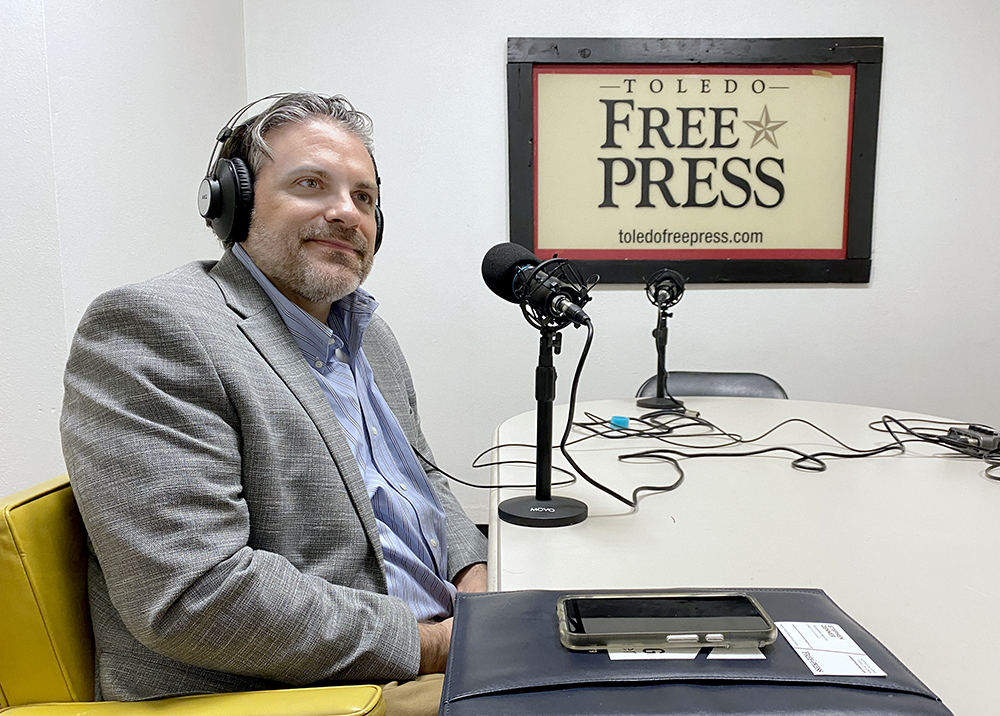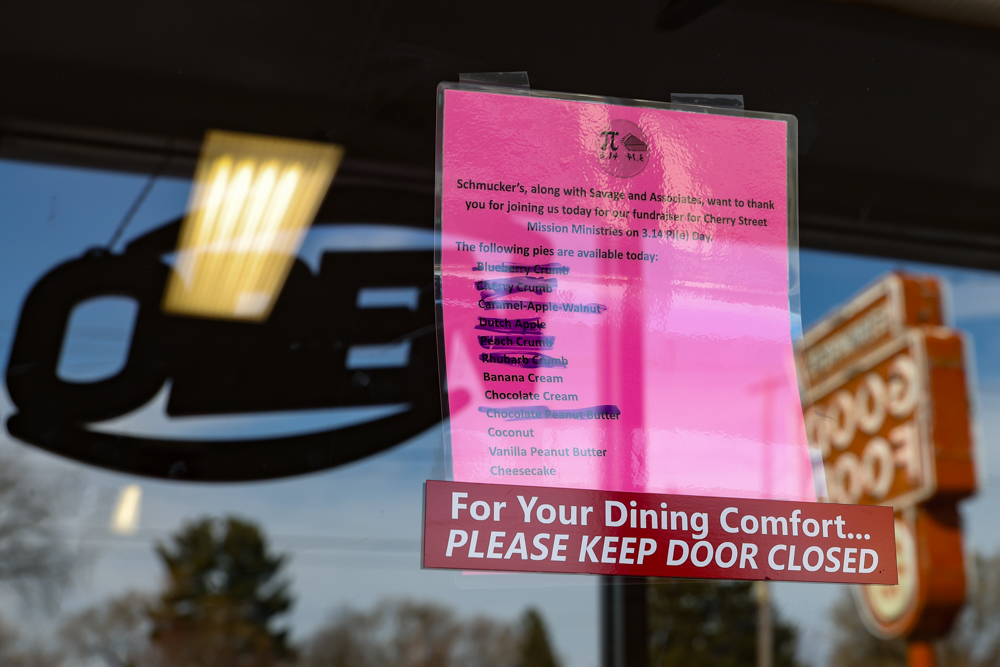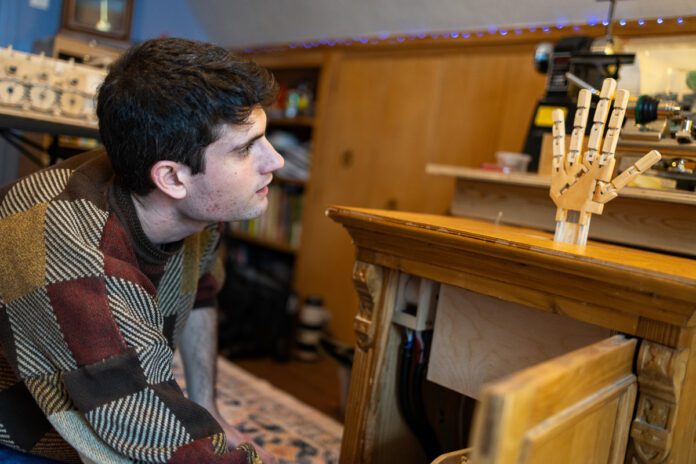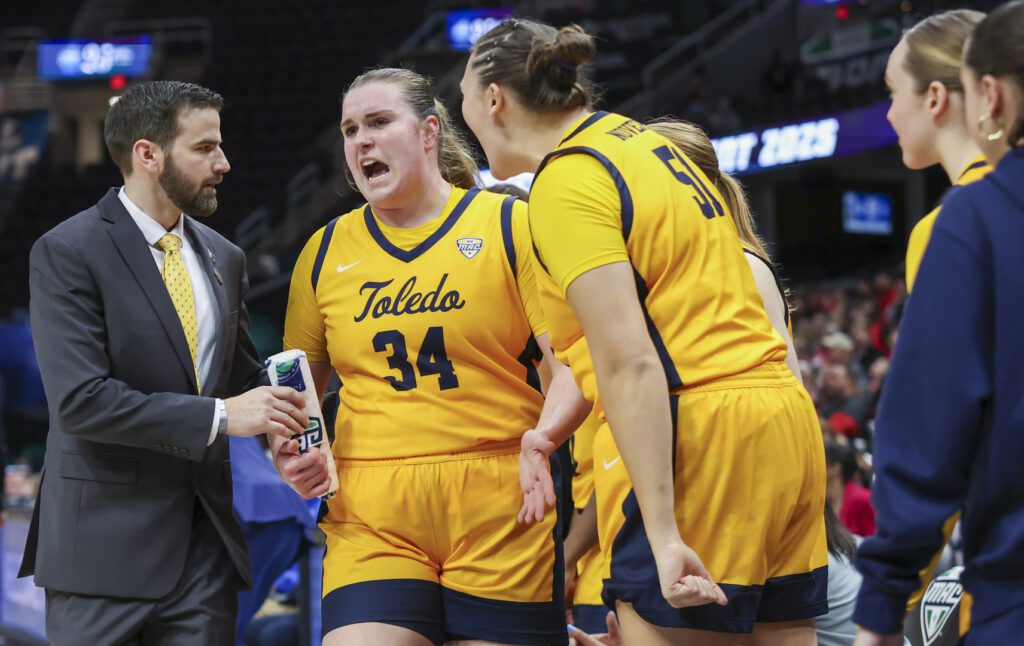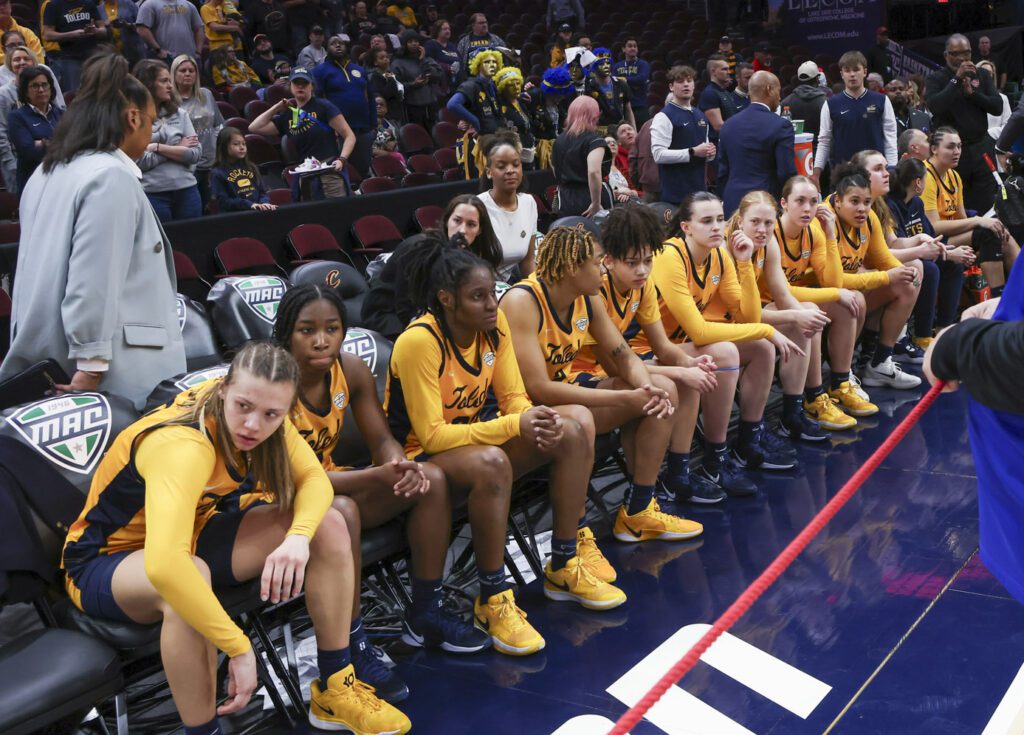OHIO – Students from Georgetown University toured Ohio towns earlier this month to learn about the impact of factory farms that Ohioans are addressing.
Guided around Toledo by Mike Ferner, of the Lake Erie Advocates, the 11 students, tour leader Paul Aversa and a faculty member Akanksha Sinha, an environmental justice fellow with the Center for Social Justice & Earth Commons at Georgetown, made a pit stop to the Toledo area, focusing on agriculture and pollution in relation to Lake Erie.
They also toured East Palestine, Cincinnati, Dayton, Yellow Springs, East Liverpool and Columbus. They returned to Georgetown March 7.

The group was a part of the Alternative Breaks Program (ABP) with the Georgetown Center for Social Justice Research, Teaching and Service. ABP provides students, faculty and staff the chance to take part in meaningful social justice experiences during fall and spring breaks.
The program encourages dedication to service and social justice by working directly with communities. Students engage in hands-on activities and learn through immersion, building stronger connections with community partners. These experiences are brought back to the Washington D.C. university, where they are encouraged to have conversations about actions that support long-term change.
The tour started on March 2 at Tony Packo’s on Front St., but I spoke with three students – El Mlawski, Olivia Tomaselli and Adhithi Rajesh – after their tour. Each student highlighted an issue with an Ohio community.

El Mlawski
Studying: Government and Spanish with a minor in environment and sustainability
Location: Toledo
In Toledo, we primarily focused on issues surrounding agriculture and pollution. With the Lake Erie Advocates, including Mike Ferner, we talked a lot about CAFOs, the concentrated animal feeding operations, and how the different kinds of waste produced at CAFOs can be really harmful to Lake Erie, seep into the groundwater and affect the entire ecosystem.
Lake Erie Advocates is taking multiple steps in response to issues surrounding water pollution. For example, they’re doing a lot of education work, presenting to schools and community centers to raise awareness for the issues surrounding CAFOs and access to clean drinking water. In addition, they are doing direct advocacy work, lobbying to Congress and the Ohio legislature in an effort to pass bills to protect clean water sources and prevent agricultural runoff.
And then, we were learning about Markie Miller, who is with Toledoans for Safe Water. She and a number of other people on their team pushes for what is known as the rights of nature. That concept refers to the inherent value of something, like Lake Erie, and how it should be protected independent of human activity. It should be protected and conserved, because it has a right to exist. Giving Lake Erie rights similar to those of human beings.”
Location: National Underground Railroad Freedom Center located in Cincinnati
This was an opportunity for us to think about the history of different marginalized groups. And so, we started with the Indigenous Adina people and their Miamisburg mound, and then we continued at the Underground Railroad Freedom Center. And there we explored the history of enslavement and Black rights and the importance of equal protections under law in modern times. And that was really interesting to see; they had really beautiful and very thought-provoking exhibits, including artwork and historical representations and artifacts.
It was definitely a heavy and interesting experience because I previously was not as aware of the Underground Railroad in Ohio.
Olivia Tomaselli
Studying: Environment in economics; women and gender studies
Location: East Liverpool, Ohio
Amanda Kiger, who is a director of River Valley Organizing, has been fighting against the hazardous waste incinerator for a long time, because of its track record of violations and health problems. She was a great guide around the community.
East Liverpool has a large hazardous waste incinerator, with a history of violations, operated by Heritage Environmental Services. There have been instances with the incinerator where the toxic smoke has covered the next-door neighborhood in ash. And looking at the health effects of that and how it continues to affect these people, the question is, ‘Why do people still live there with the health effects?’
Housing is scarce. It’s expensive. You know, people can’t always leave.
It’s also very tricky, because these people work there. These are their jobs. So they kind of look at…how do you put pressure on things like this and make the community a more environmentally friendly place, when these are people’s jobs, and people need this type of work?
Adhithi Rajesh
Studying: Psychology and pre-med
Location: Antioch College in Yellow Springs
We went to Antioch College, where we spoke to Shane Creeping Bear, who is head of admissions. We discussed how they are specifically geared around the Indigenous community, and how a lot of their techniques for maintaining the environment and things like that have been basically appropriated by society, taken by white researchers and termed as different things. And the credit hasn’t gone back to that community, which does a lot of things.
Firstly, they don’t get credit for the work they’ve done, and a lot of times they’re shunned as just using ‘magic’ or just not taken seriously. And, second of all, they’re not taken seriously when it comes to issues of how to further preserve the environment. Their techniques aren’t seen as valid because they were termed differently and taken over by researchers who claim to have discovered these new methods of cultivating land.
Mainly, they promote regenerative farming rather than simply sustainable farming. They advocate that we should be stewards of nature while farming. So, that’s what they focus on, the fact that we’re not just here to take some nature; we’re also here to give back to it and maintain a reciprocal relationship.
Regenerative farming is what the indigenous community in Antioch was talking about: restoring and enhancing the productivity and health of ecosystems. For example, plant extra so that nature and animals can sustain themselves. It’s about focusing on altering it in a way that’s beneficial for both humans and nature…like invasive species. Don’t let them get into certain areas and things of that nature.
Location: Dayton – Black Indigenous People of Color Food & Farming Network
BIPOC is a group and collective where everyone who’s farming and people of color who don’t have access to other resources and information can come here, learn from others and just work together in that sense.
The Edgemont Solar Garden was a community farm to have more fresh food options for the people in that community; it was kind of a food desert in terms of not having a lot of access to fresh fruits and vegetables. So these guys came together and developed this farm growing a lot of different plants. They had banana trees and collard greens and things of that nature that people wouldn’t normally be able to have access to. So, they really showed how, even in a smaller space with not a ton of money, you could really develop a lot of these plants with just the proper sunlight and water and care.
And the kitchen incubator was basically a space for people starting food businesses, restaurants and such [to] rent out a space. They could have this kitchen space where they could either operate it as a ghost kitchen where they just make the food and deliver it, or they could operate it as a restaurant.
So, they did the work to give their community a wider variety of access to both healthier foods, and also give small businesses the chance to kind of operate in this area. We really saw that a lot of these small businesses weren’t able to develop as much in the area, so [the incubator] gave them a chance to do that without having to put down a really big investment.
They also educate a lot of the younger people in the area about eating healthy. One of the people we talked to said that you can grow all these vegetables as much as you want, but unless the kids actually want to eat it, there’s no real benefit there. Side-by-side, they teach the kids about healthy foods and vegetables, show them how it’s actually grown and get them excited about so they eat healthy in the future as well.










